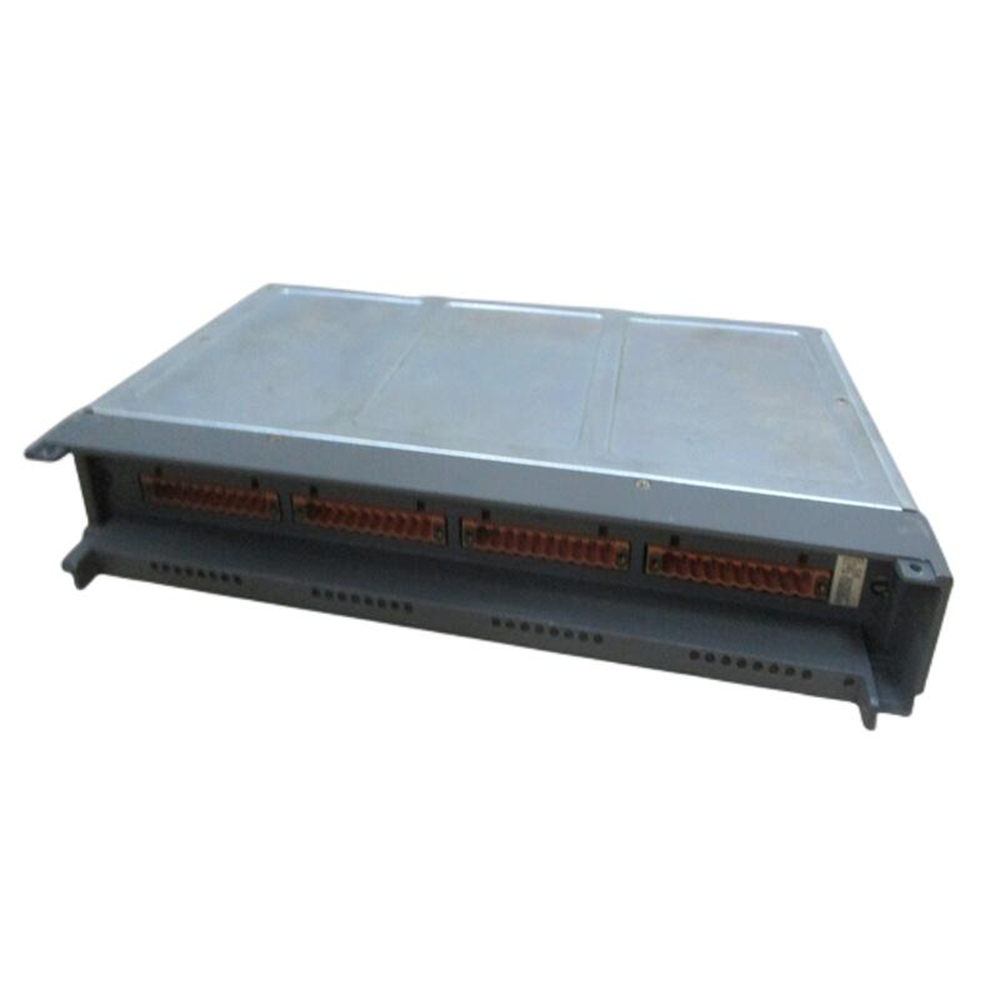ABB DDO02 Industrial Digital Output Module
ABB DDO02 Industrial Digital Output Module
The DDO02 digital output module provides up to 16, CH-2-CH isolated transistor type, 24 to 48 VDC output signals.
The open-collector outputs of the module are capable of sinking or sourcing up to 250 mADC.
The DDO02 module features also include short-circuit detection, status indication and overcurrent protection.
FC 221 (I/O Device Definition) sets DO module operating parameters and each output channel is configured using
FC 225 (Digital Output CH) to set indivdual output channel parameters such as alarm state setting, default state on loss of communication with controller, etc.
Features and benefits
16 individually CH-2-CH isolated DI channels supporting:
24 to 48 VDC Transistor Type DO signals
Module can sink or source up to 250 mADC I/O current
Short-circuit detection, status indication and overcurrent protection.
Output Status LEDs on module frontplate
Galvanic isolation of 1500 V for up to 1 minute
Technical specifications
Model: DDO02
Number of output channels: 16
Output signal type: 24VDC (can be configured as dry contact / wet contact output)
Single channel output current: 1A
Communication interface: dual RS-485, dual Ethernet interface
Support communication protocols: Modbus RTU, Modbus TCP, PROFINET, EtherNet/IP, etc.
Resolution: 12 bits
Operating temperature range: -40°C to +85°C
Humidity range: 5% to 95% (non-condensing)
Protection rating: IP65
Dimensions: 22cm x 6cm x 35cm
Weight: 2.1kg
Precautions for use
Installation and wiring: When installing, make sure the module is installed in a firm position and avoid violent vibration and impact. Strictly in accordance with the wiring diagram for the power supply and signal line connection, the use of cables that meet the specifications, and do a good job of shielding and grounding to prevent electromagnetic interference affecting signal transmission. For high-power load equipment, it is necessary to confirm that the cable current-carrying capacity to meet the requirements, to avoid overloading caused by potential safety hazards.
Parameter Configuration and Commissioning: Before putting into use, make sure to accurately configure the module parameters through programming software according to the actual application requirements. During the debugging process, gradually check the function of each output channel and observe whether the device action meets expectations. The switching function of the dual-redundant communication interface can be tested by simulating a fault scenario to ensure the reliability of the communication system.
Routine maintenance and care: Clean the module regularly, wipe the surface dust and dirt with a dry and dust-free soft cloth to prevent dust accumulation from affecting heat dissipation and electrical performance. Check whether the connecting cables of the module are damaged or aging, and replace the damaged cables in time. Pay attention to the module status indicator, if there is an abnormal flashing or alarm prompts, you need to consult the fault code manual in time to take the appropriate maintenance measures

- EMERSON
- Honeywell
- CTI
- Rolls-Royce
- General Electric
- Woodward
- Yaskawa
- xYCOM
- Motorola
- Siemens
- Rockwell
- ABB
- B&R
- HIMA
- Construction site
- electricity
- Automobile market
- PLC
- DCS
- Motor drivers
- VSD
- Implications
- cement
- CO2
- CEM
- methane
- Artificial intelligence
- Titanic
- Solar energy
- Hydrogen fuel cell
- Hydrogen and fuel cells
- Hydrogen and oxygen fuel cells
- tyre
- Chemical fiber
- dynamo
- corpuscle
- Pulp and paper
- printing
- fossil
- FANUC
- Food and beverage
- Life science
- Sewage treatment
- Personal care
- electricity
- boats
- infrastructure
- Automobile industry
- metallurgy
- Nuclear power generation
- Geothermal power generation
- Water and wastewater
- Infrastructure construction
- Mine hazard
- steel
- papermaking
- Natural gas industry
- Infrastructure construction
- Power and energy
- Rubber and plastic
- Renewable energy
- pharmacy
- mining
- Plastic industry
- Schneider
- Kongsberg
- NI
- Wind energy
- International petroleum
- International new energy network
- gas
- WATLOW
- ProSoft
- SEW
- wind
- ADVANCED
- Reliance
- YOKOGAWA
- TRICONEX
- FOXBORO
- METSO
- MAN
- Advantest
- ADVANCED
- ALSTOM
- Control Wave
- AB
- AMAT
- STUDER
- KONGSBERG
- MOTOROLA
- DANAHER MOTION
- Bently
- Galil
- EATON
- MOLEX
- Triconex
- DEIF
- B&W
- ZYGO
- Aerotech
- DANFOSS


email:1583694102@qq.com
wang@kongjiangauto.com




































![Applied Materials 0020-28205 - 124-0101 AMAT APPLIED COVER RING, 6 101% HI-PWR COH [REFURBISHED]](https://hkw170181-pic8.websiteonline.cn/upload/AppliedmaterialsAMAT0090-04468CONTROLLERRTCCPCICENTURAAPCP3450-S0006073_dps3.png)







![Applied Materials 0020-20691 - 120-0501 AMAT APPLIED PEDESTAL CD/PT WAFER200 MM [REFURBISHED]](https://hkw170181-pic8.websiteonline.cn/upload/AMATAPPLIEDMATERIALS0190-51379RFGPLASMAGENERATORSSM3000TRUMPFHUTTINGER3_20g6.png)









































